How do you beat a pro on Zwift? An investigation
David Bradford tracks down the giant-slayers of the virtual world and begs for their secrets
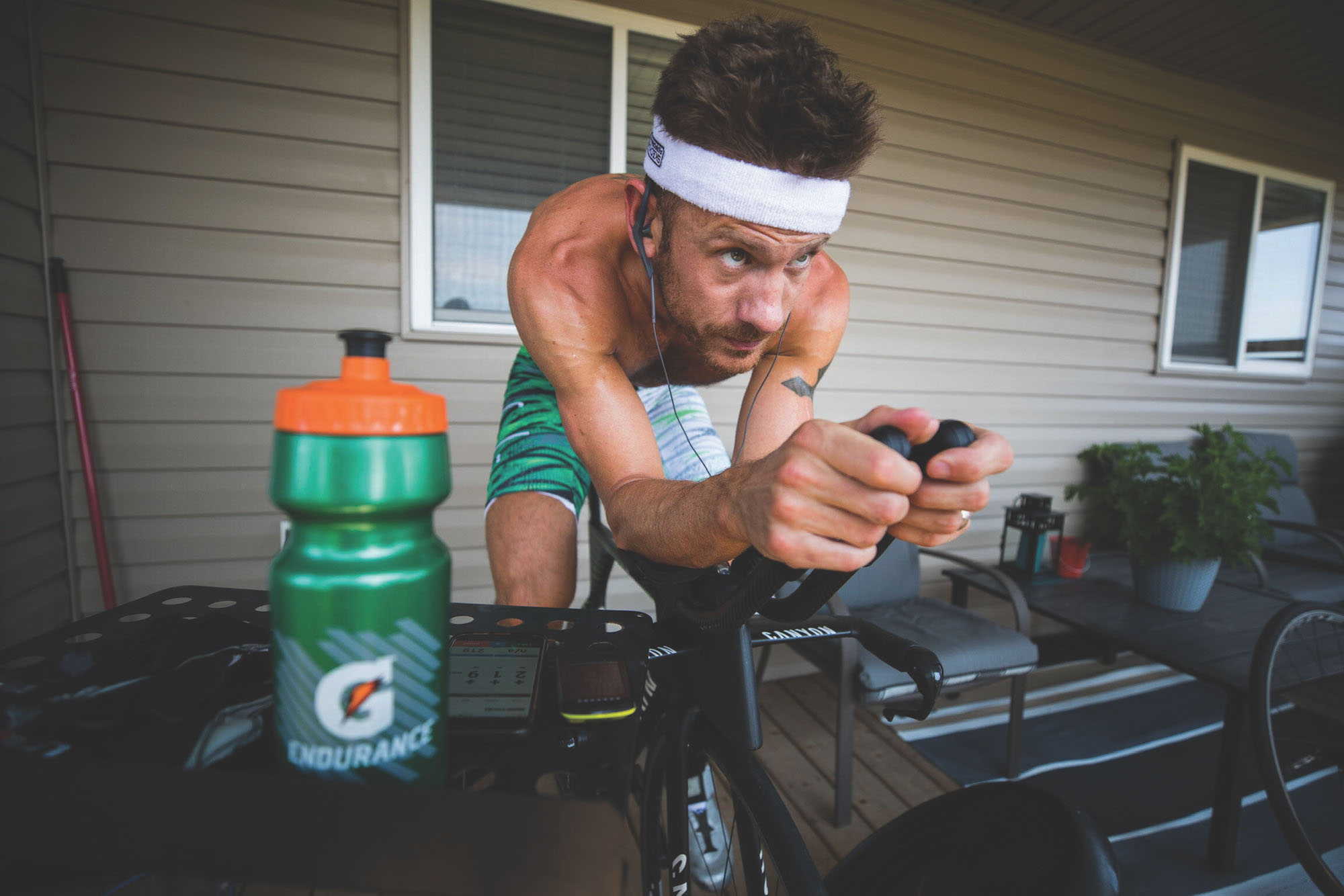
Canadian Ironman Lionel Sanders beat Van der Poel at a virtual Tour of Flanders (Talbot Cox)
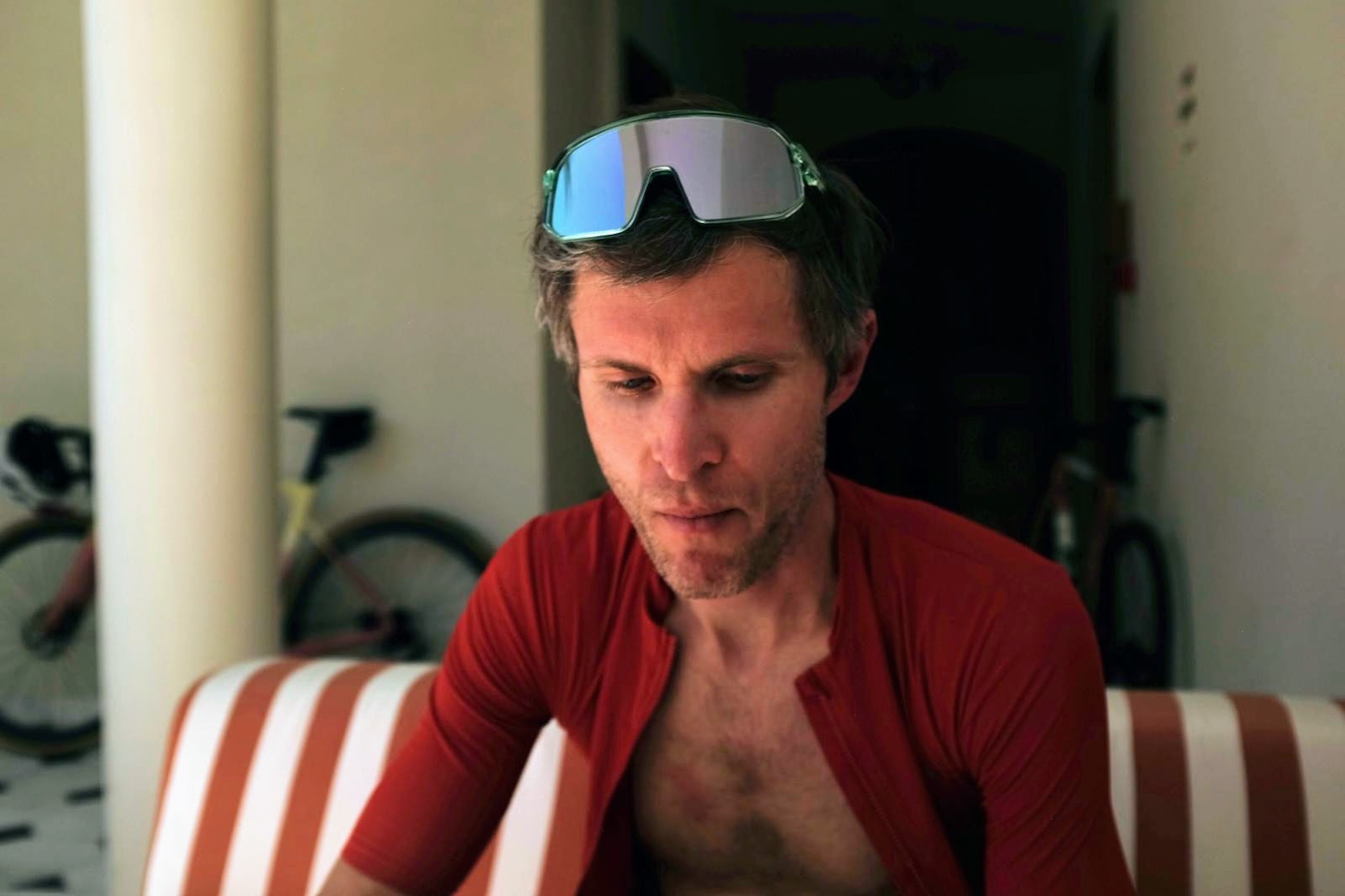
"What fresh hell is this?" I’m standing up, wrenching every last microjoule onto the Wattbike pedals, eyes glued to the iPad: 360 watts, 375, 400, briefly touching 415 as I’m forced to accept that, whatever I have left, it’s not enough. Watching fast-pedalling avatars line out ahead single-file like over-stretched elastic, I’m anchored at the sore end for the imminent snap. We’re merely six minutes into Ronde van Zwift – a virtual substitute (of sorts) for the Tour of Flanders – but my day is done.
In honour of the real Ronde, cancelled because of Covid-19, Zwift had invited the Alpecin-Fenix team, along with a selection of the world’s best Zwifting specialists, to do battle over 27.6km, three laps of its hilly Richmond course. Standout favourite for the win was naturally Mathieu van der Poel, he of apparently limitless talents. And what am I doing here? I was invited to join a euphemistically tagged ‘all-stars’ team of journalists and guests; AKA cannon fodder.
The rest of the race is for me a lonely TT to the finish. On a separate screen I watch the video feeds of the leading riders on their turbos in their respective homes, faces grim with determination, in and out of the saddle, sweat pouring. With eight kilometres to go, Alpecin-Fenix’s Louis Vervaeke launches an attack, but it’s swiftly countered by Canadian triathlete Lionel Sanders, riding as a guest on the Canyon ZCC team.
The whittled-down group of four remain together until just before the final ascent of Libby Hill, with 4km to go, when Sanders activates an aero power-up and explodes off the front. It’s a jaw-dropping moment; he holds nigh-on 8w/kg – that’s 580 watts – right to the top of the climb. Fully committed now, he grits it out, veins bulging as he holds 6.5w/kg for the next 3km, before somehow turning the screw even further, up to 600 watts, to fend off a stupendously powerful sprint by Swedish cross-country MTB racer Samuel Brännlund (post-race stats reveal that Brännlund held 13.4w/kg for a full 15 seconds).
What’s even more astonishing are the results: never mind van der Poel’s absence from the final skirmish, no one from Alpecin-Fenix makes it into the top 10. In fact, there’s not a single current pro road racer among them. Sanders is a triathlete, Brännlund an off-roader, and the rest are a mix of former pros and MTBers-turned-Zwift specialists, all representing elite Zwifting teams. Does this really mean what it seems to imply – that Zwifting is its own discipline, requiring a different, special set of skills that not even the best pro road racers possess? And if so, how can I become a Zwift specialist too?
The tough get going
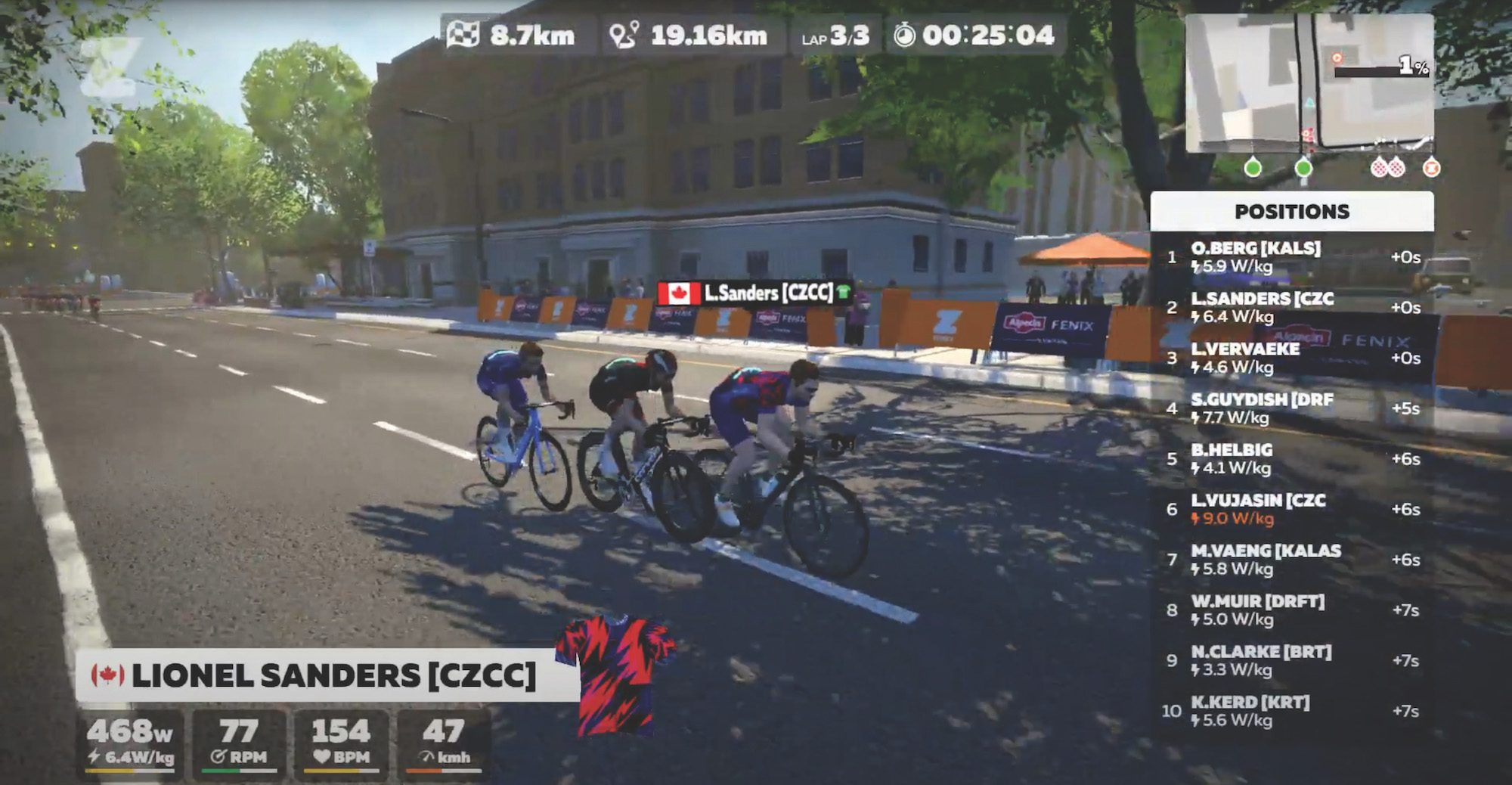
It’s almost too painful to accept: a triathlete has wiped the floor with one of the best cyclists in the world. OK, Sanders is no average triathlete; he held the Ironman world record (7hr 44min) until it was broken by Britain’s Tim Don in 2017. The 32-year-old Canadian, with his trademark headband, tattoos and ripped upper body, looks more like an MMA fighter than a cyclist. Does Zwifting suit a brawnier, tougher, frankly more badass sort of athlete? I decide to be brave and ask him.
Get The Leadout Newsletter
The latest race content, interviews, features, reviews and expert buying guides, direct to your inbox!
Sanders is an intriguing character; he has been publicly open about the fact he struggled with depression and substance abuse in his late-teens, dropped out of university and didn’t return to sport until several years later, in 2009. These days, he’s a triathlon superstar with a substantial following on social media. When my email finally finds its way through to him, he replies to my questions candidly and in generous detail.
"To be a good rider on Zwift," he gets straight to the point, "you have to have an excellent power-to-weight ratio. If you don’t have that, nothing else really matters."
But power is nothing without control; again and again through his email, Sanders refers to "Zwift IQ" – e-racing intelligence. "You need to be constantly watching the sidebar to see if someone is attacking," he begins a list of tips. "You don’t want to spend too much time near the back of the pack in case a gap opens. You need to have the right power-up and use it at the right time, and then, of course, you also need a little bit of good luck."
Sadly, there is no short cut to a high Zwifting IQ. Sanders stresses the importance of accruing hour upon hour of experience on the platform, almost like flying hours for a pilot trying to earn their licence. "I have spent 45 days of my life on Zwift, and I am still learning," he writes. Sanders has stated elsewhere that he does almost all of his bike training indoors. He is a Zwifting specialist in the truest sense, a fact he fully acknowledges when I ask how it felt to beat Van der Poel.
"It was a lot of fun, but I have been racing on Zwift long enough to know to take these results with a grain of salt," he modestly reflects. "Mathieu has very little Zwift experience. I have probably 20 or 30 times more race and training experience on the platform. In real life
he would whoop my ass on this course, I know that."
Making the transition
Sanders’ closest Canyon ZCC team-mate in the race, in third place, is another Lionel, Belgium’s national Zwifting champion Lionel Vujasin. He started out racing MTB and cyclo-cross, so I want to know how he has transitioned to Zwifting so successfully. "I’m not gonna lie, I was pretty average [off-road]," says Vujasin. "I had the endurance, but not so much the technical skills."
I’m slightly taken aback. Vujasin is currently ranked sixth overall on ZwiftPower (the site that collates results, stats and rankings while filtering out dubious performances) – he is one of the best Zwifters in the world. How did he get there from being just a mid-pack MTBer?
"Well, my physical abilities were well-conditioned from mountain biking," says the 30-year-old, "and the rest is all about experience with Zwift. I went to live events early on, met a lot of the big names, and started to learn – it’s all about the skills specific to the game… anticipation... getting a feel for how your avatar moves."
Without getting too ‘transhumanist’ about it, this is beginning to sound like the merging of man and machine – the champion Zwifter being he who becomes most intimately attuned to the intricacies of the software. Vujasin talks about being able to predict the virtual road positioning of his avatar just by being able to ‘read the game’, allowing him to stay sheltered and make the most of Zwift’s simulated drafting.
>>> Subscriptions deals for Cycling Weekly magazine
Interestingly, he shares not only a first name with Sanders, but is the same body weight, 73kg, and has a similarly mighty FTP (approximately 420 watts). Does he think Zwift favours a certain physical type, wiry and lean, aerobically strong but with a killer sprint too – like
a Classics specialist?
"If you asked me to select the one rider in the world who had the most potential to be the ultimate Zwift racer," says Vujasin, "it would be someone like Filippo Ganna."
It’s hard to disagree: having four-minute power enough to break the individual pursuit world record combined with world-class time trialling ability certainly does seem a handy skillset for Zwift racing. Bit of a tall order for us mere mortals, mind.
"Guys from cyclo-cross can also do really well," Vujasin reassures, "because they’re used to continual on/off bursts of hard effort. That’s my own strength: I like to make the race more difficult for the other guys. A mix of cyclo-cross and track abilities would be the ideal."
According to Vujasin, maximising performance on a static bike calls for a kind of forgetting of the real-world rules. Sprinting is a good example – firstly the strategy: "Usually in Zwift races it’s a double effort – you jump on the wheel of someone who’s passing you, then you try to kick again for the line."
And secondly, technique: "It’s all about your position on the trainer – only a specialist on Zwift can produce as much [peak] power inside as outdoors. It’s funny – when I posted an image of myself sprinting on Instagram, so many people commented that it looked horrible. To sprint effectively on Zwift, you’re very front-heavy, standing taller to open the hip flexors, on the hoods, not the drops – you don’t need to be aerodynamic at all."
Zwift-compatible pros
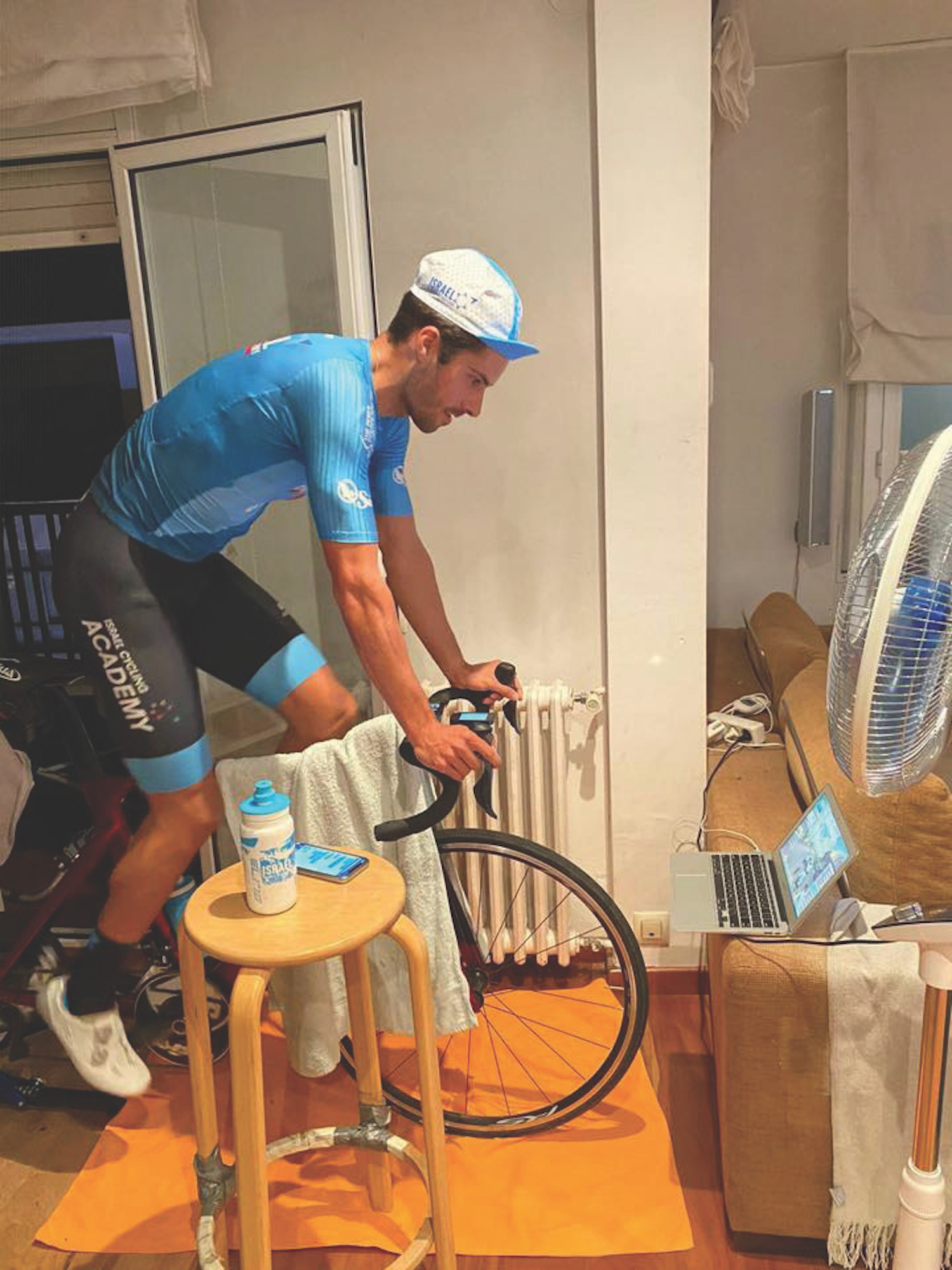
Though many pro riders seem to be underperforming on Zwift, there are some notable exceptions. One of the highest-ranked pros on ZwiftPower is 26-year-old Freddy Ovett, the Israel Cycling Academy rider, with a long list of wins to his name. Prior to lockdown, Ovett had barely ridden on Zwift, except for a few obligatory rides for a previous team.
"I hated it, to be honest," he tells me over Skype. "Like a typical pro, I found it got in the way of my normal training; it was just a hassle and I didn’t understand it."
So why the change of heart? "I started lockdown without Zwift, and I don’t know what drew me into it. Maybe just the fact some of my mates were on there. I jumped on and did a few races, and just really enjoyed it."
Scrolling through Ovett’s recent Zwift results, two things jump out: first, that he recently set a scorching 20-minute best power of 6.1w/kg; and second, that he has been racing up to three times a day on the platform – I’m surprised to see a pro rider getting so immersed in the virtual realm rather than following a structured, controlled training programme.
"Yeah, my coach definitely wasn’t like, ‘Sure, go ride three Zwift races’," admits Ovett, "but I would look at the programme he had set, and he’s comfortable with us combining parts of each other’s ideas, so I would use the Zwift racing to get what I needed out of the day, not to get results."
What makes Zwift racing an effective form of training? "It’s just bang-for-your-buck training," says Ovett. "Because you don’t really have control over the situation or the races, aside from profile and distance."
The uncontrollables include competitors – and Ovett treats it as part of the unpredictable challenge when he finds himself chasing down avatars putting out improbable watts per kilo.
"You get these guys entering all sorts of weights," he says, "but I just treat them as pacemakers – they actually help me push myself. I know a lot of people get upset about these sorts of guys, but I actually like how they drag me on."
For the benefit of younger readers, it’s worth pointing out that Ovett is the son of celebrated British middle-distance runner Steve, Olympic champion and track nemesis of Seb Coe. Freddy started out as a runner like his dad, but switched to cycling after picking up injuries – could it be that Zwift favours certain athletic traits inherited from other disciplines?
"I think there’s a big separation between racing for one hour or less and the three-, four-, five-hour type of duration we pros race," says Ovett. "A lot of guys, especially runners and triathletes, can do really good power for an hour because they haven’t necessarily built up massive mileage on the bike… Of course, that doesn’t necessarily correlate to being a good [real-world] bike racer, which is something I’m working on as well."
Open to all
Road-racing purists might not enjoy getting a kicking from MTBers and triathletes in the virtual world, but we need to focus on the bigger picture: arguably the best thing about Zwift is its accessibility. Sure, you need a smart-trainer, but there are no other logistic hurdles; you don’t need a race licence, there’s no travel involved, and it’s literally impossible to crash. For those of us unable to race outdoors – I have faulty peripheral vision thanks to an inherited eye condition – Zwifting has opened up a whole new competitive world, liberating us to get fully involved on equal terms.
In a similar boat to me is former closed-circuit TT champion Rachael Elliott, who in February 2018, aged 39, suffered a stroke during training, leaving her with Parinaud’s syndrome, meaning she can no longer move her eyes, which are fixed looking downward. Despite this disability – or perhaps because of it – Elliott has become a force to be reckoned with on Zwift; at the time of writing, she is the top-ranked female on ZwiftPower.
"I raced myself fit," Elliott laughs. "My FTP is almost back to where it was pre-stroke, and rather than getting stressed about intervals, I’m solely racing, with the efforts dictated by what other people are doing – often forcing me to go as hard as I can to keep up."
Earlier this year, Elliott averaged 300 watts on her way to winning a Newbury Velo ‘Club 10’ on Zwift, equating to 5.3w/kg – despite still having some residual weakness from the stroke. Her sight issue means that the display screen has to be positioned on the floor, with a specially adapted user interface showing her power directly above her avatar. It’s a comeback story worthy of a Hollywood blockbuster.
>>> Cycling Weekly is available on your Smart phone, tablet and desktop
Elliott had hoped to get involved in paracycling, but British Cycling rejected her application on the grounds she does not fit the classification criteria – an unfathomable situation, given that the raison d’etre of para-sport is meant to be inclusivity. In stark contrast, Zwift is providing not only a replacement competitive outlet for the 42-year-old, but a whole new arena of world-class racing – with prize money to match.
"Most of the pro-am races have prizes attached," says Elliott, referring to Zwift’s invitational series, which she competes in with her team Kiss Racing. "In the women’s pro peloton, some riders have been very outspoken about how they can earn more money e-racing than they can from racing the Giro."
In these top-level races, it’s not unusual to pick up £1,000 for an individual win, and a "few thousand" to split among team members for a major team result.
"There are no full-time pros on our team," says Elliott, "so the most they’d win in a normal race is 30 quid to buy a round of drinks at the pub. Now they’re winning the sort of money they just wouldn’t see in normal races."
Of course, the downside of prize money is that, for the morally fallible, it’s an added temptation to cheat.
"A woman who runs a very prominent women’s team contacted me last week really angry about a pro race [on Zwift] that had been done without any verification," recounts Elliott. "She told me how certain riders were putting out 400 watts and riding off the front – a
level of performance they’re not capable of in real life."
The counter measure newly introduced for pro-am races is that eligible riders have to video themselves undertaking a gamut of performance tests, doubly measured using twin power meters, which then provides a form of data passport against which future performances are benchmarked.
"I’m going to do my verification test this afternoon after speaking to you," says Elliott. "It’ll take two hours – you have to film yourself calibrating both power sources, then do all the tests… It’s awfully stressful!"
Although she competes on the world stage of Zwifting, Elliott objects to virtual racing being spoken of in the same breath as bona fide racing in the great outdoors.
"It angers me when people try to compare Zwift racing to, say, the Tour de France. It’s not and never can be – it’s an entirely different form of racing, needing entirely different skills."
In other words, being a professional bike racer requires masterful bike-handling, tactical nous and long-range resilience against repeated changes of pace over long days in the saddle, a skill set that takes years to accrue.
A Zwift race contains only the shortest, sharpest ingredients from outdoor racing, as Elliott explains: "It’s like a cyclo-cross start followed by a ferocious crit race, then a punishing sprint."
I’d intended to mine Elliott for her training tips on becoming a Zwift specialist, but she insists it’s mostly just about competing frequently and surrendering to the addictive, arguably masochistic, thrill of the racing. She does, however, underscore the importance of knowing your way around the virtual garage.
"You’ve got to know the equipment," she says. "I use the website Zwift Insider all the time, to find out which bike and wheel combination will be fastest over a particular course."
There are Zwifting wonks constantly testing the relationships between virtual parts and their performance.
"It can be quite geeky," Elliott admits. As well as equipment research, she sleuths her rivals’ strengths and weaknesses before each race. "It takes an awful lot of time – I’ll spend three or four times longer on reading to prepare for a race than on actually racing it."
My big chance
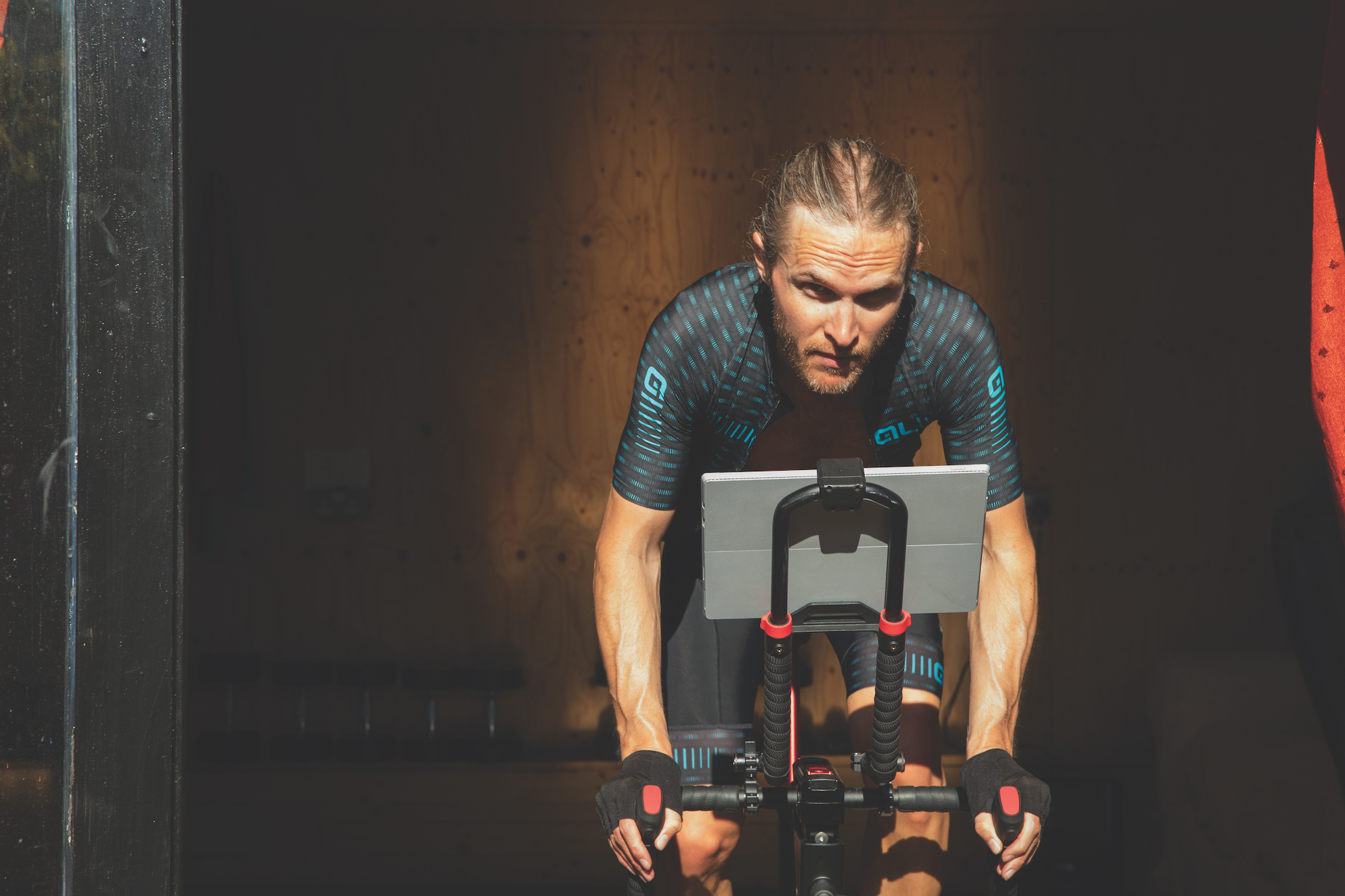
It’s now three months since my rude awakening at Ronde van Zwift, and the shock and awe haven’t put me off. While writing this feature, I’ve been racing on Zwift twice a week, and my results have been steadily improving – but without a podium finish to my name. My big chance comes at Stage 5 of the Tour for All – ‘Keith Hill Afterparty’, mostly flat but with a hilltop finish – when I find myself on the start line amid the smallest field I’ve ever seen on Zwift. There’s just one hitch: lurking next to me is an avatar conspicuously clad in Trek-Segafredo kit.
The banner falls and our small lead group soon settles to a manageable pace; the name hovering above the Trek figure is "E Liepins". My brother Matt – flitting in and offering unwelcome punditry – googles Liepins on his phone, then looks up with a smirk. "Don’t worry, he’s a sprinter – you’ll just have to go long." With about 20km to go, the pace of the group softens further, and I take the deranged decision to act on Matt’s advice. Hitting an aero power-up, I launch a long-range solo attack, surging away, then holding as close as I dare to my (theoretical) FTP of 350 watts.
Miraculously, it seems to work: I get away and the gap steadily widens kilometre after kilometre.
With little more than 5km to go, I’ve eked out a buffer of nearly a minute, and I’m daring to dream: it’s mine for the taking. But then we hit Keith Hill, and we’re barely over the initial small ramp before I notice the gap has halved and Liepiņš’ power is lit up in orange, signalling incendiary-level wattage. What the…? It all happens so fast; I’m not even halfway up the steep middle section when he scorches past and leaves me for dust. Two chasing riders also get past, killing off any last vestige of podium hope; I’m spent, there is literally nothing I can do except cling on for fourth.
It turns out that Emīls Liepiņš is not merely a sprinter but a highly accomplished all-rounder whose palmares include podiums in one-day and stage races alike. Once I’ve dressed the wounds to my pride, I catch up with the 27-year-old Latvian on Skype, hoping he can expand on the harsh lesson he has just taught me.
"That guy’s crazy!" Liepiņš recalls his initial reaction to my solo break. "But when the gap got to one minute, I was thinking, ‘For sure, he will win’."
It feels absurd to ask a WorldTour pro how he beat an impudent amateur like me, but here goes: how did he obliterate that gap? "I started the climb at 700 watts, then 600... 600 a bit longer, and finally dropped the other guys. It was really hard, actually, that climb."
Well, that makes me feel better: at least he had to break a sweat. It’s short-lived consolation, however, as Liepiņš recounts his "warm-up" for the race.
"It was raining, so I agreed with my coach to do the session indoors, 90 minutes at 300 watts, then the race," he says, deadpan. What? "Yeah, 10 times nine minutes at 300 watts, which is not really easy. I jumped straight into the race afterwards; it was the next one available."
This feature originally appeared in the print edition of Cycling Weekly, on sale in newsagents and supermarkets, priced £3.25.

Thank you for reading 20 articles this month* Join now for unlimited access
Enjoy your first month for just £1 / $1 / €1
*Read 5 free articles per month without a subscription

Join now for unlimited access
Try first month for just £1 / $1 / €1

David Bradford is features editor of Cycling Weekly (print edition). He has been writing and editing professionally for more than 15 years, and has published work in national newspapers and magazines including the Independent, the Guardian, the Times, the Irish Times, Vice.com and Runner’s World. Alongside his love of cycling, David is a long-distance runner with a marathon PB of two hours 28 minutes. Having been diagnosed with retinitis pigmentosa (RP) in 2006, he also writes about sight loss and hosts the podcast Ways of Not Seeing.
-
 'I'll take a top 10, that's alright in the end' - Fred Wright finishes best of British at Paris-Roubaix
'I'll take a top 10, that's alright in the end' - Fred Wright finishes best of British at Paris-RoubaixBahrain-Victorious rider came back from a mechanical on the Arenberg to place ninth
By Adam Becket Published
-
 'This is the furthest ride I've actually ever done' - Matthew Brennan lights up Paris-Roubaix at 19 years old
'This is the furthest ride I've actually ever done' - Matthew Brennan lights up Paris-Roubaix at 19 years oldThe day's youngest rider reflects on 'killer' Monument debut
By Tom Davidson Published
-
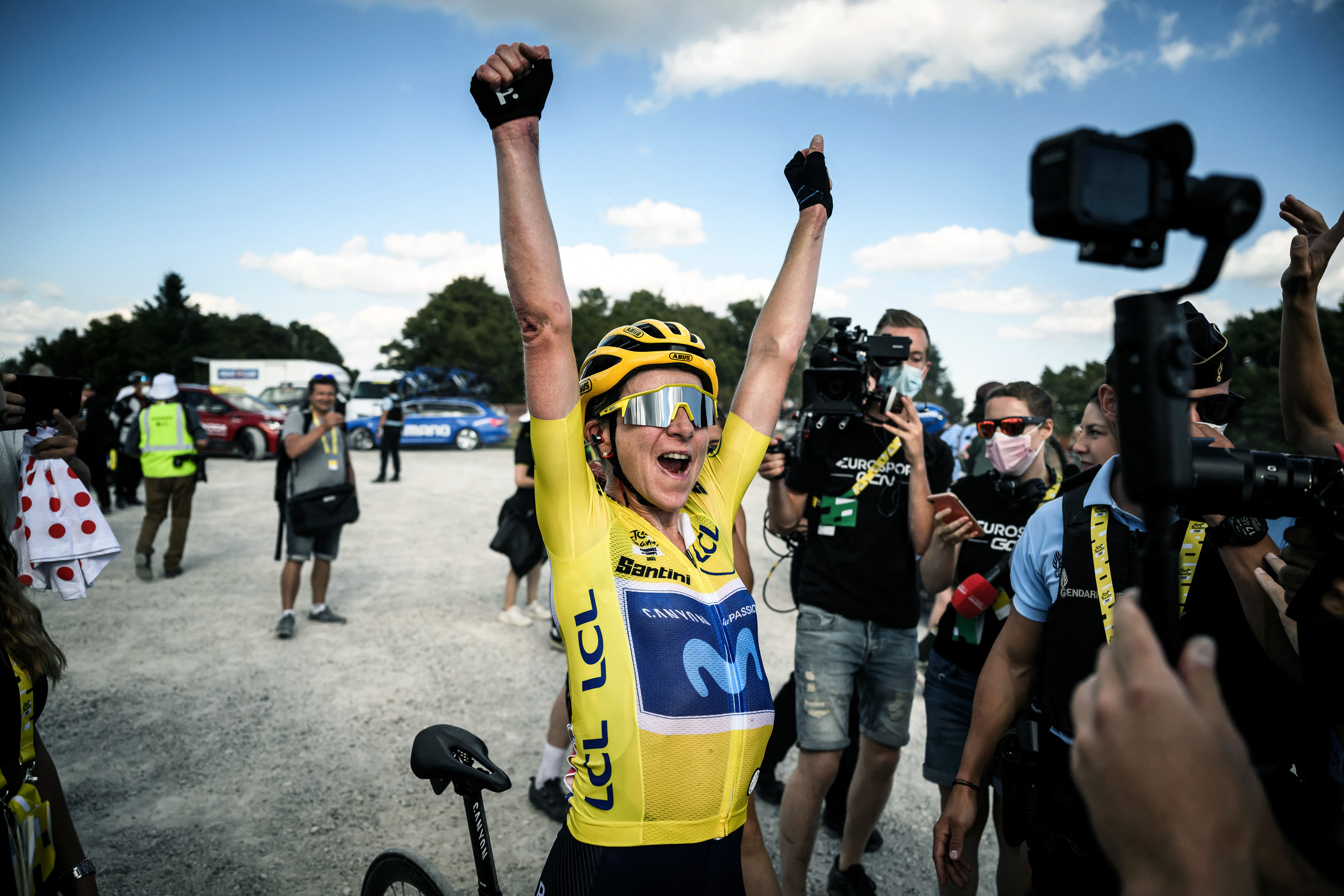 Don't miss these three stages of the 2023 Tour de France Femmes
Don't miss these three stages of the 2023 Tour de France FemmesThe eight-stage route promises high drama, no more so than on these three days
By Tom Davidson Published
-
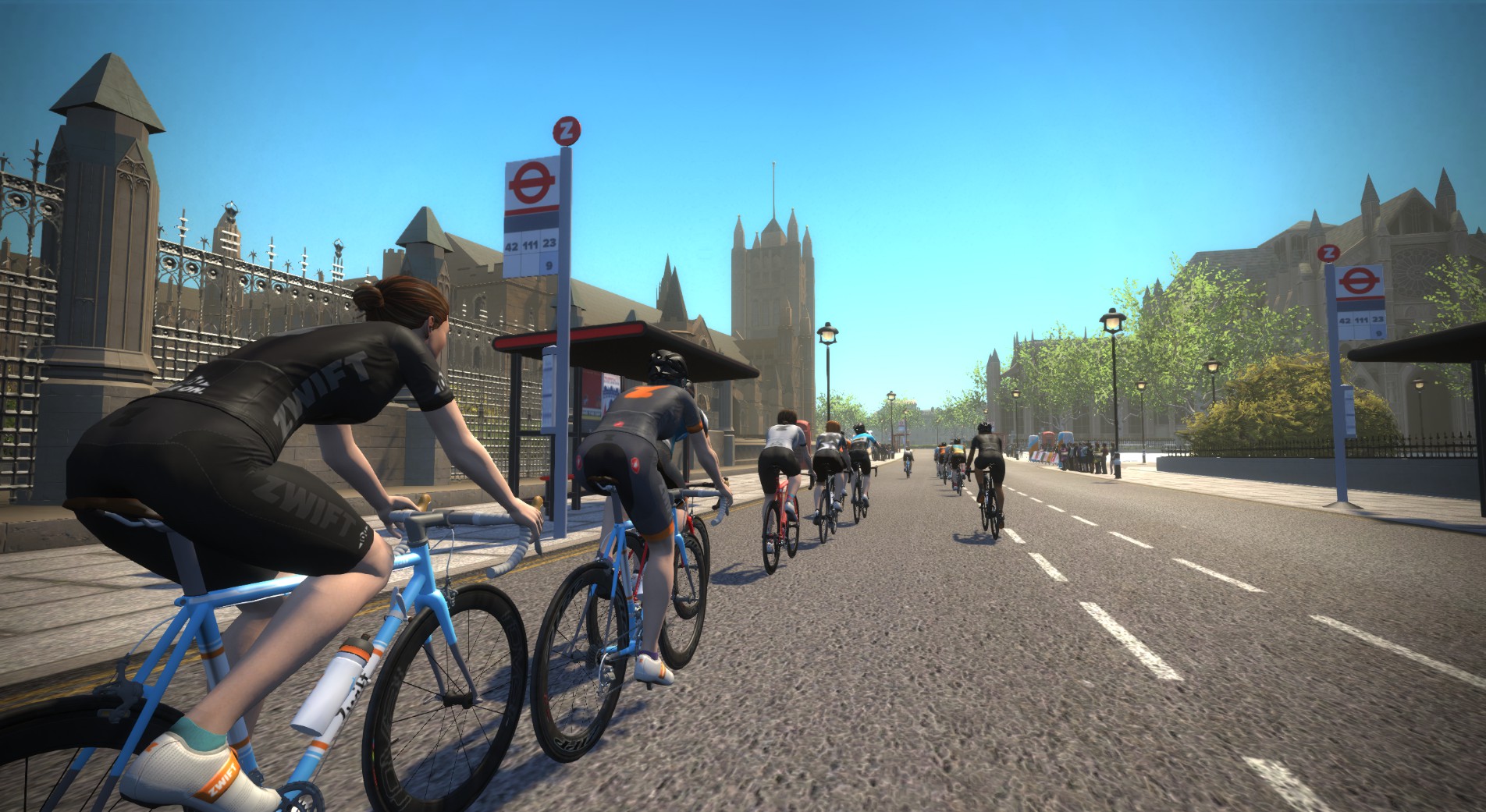 Cycling Weekly Club 10 time trial winner makes it through to Zwift Academy finals
Cycling Weekly Club 10 time trial winner makes it through to Zwift Academy finalsWill Lowden is the cousin of Uno-X pro Joss Lowden
By Vern Pitt Published
-
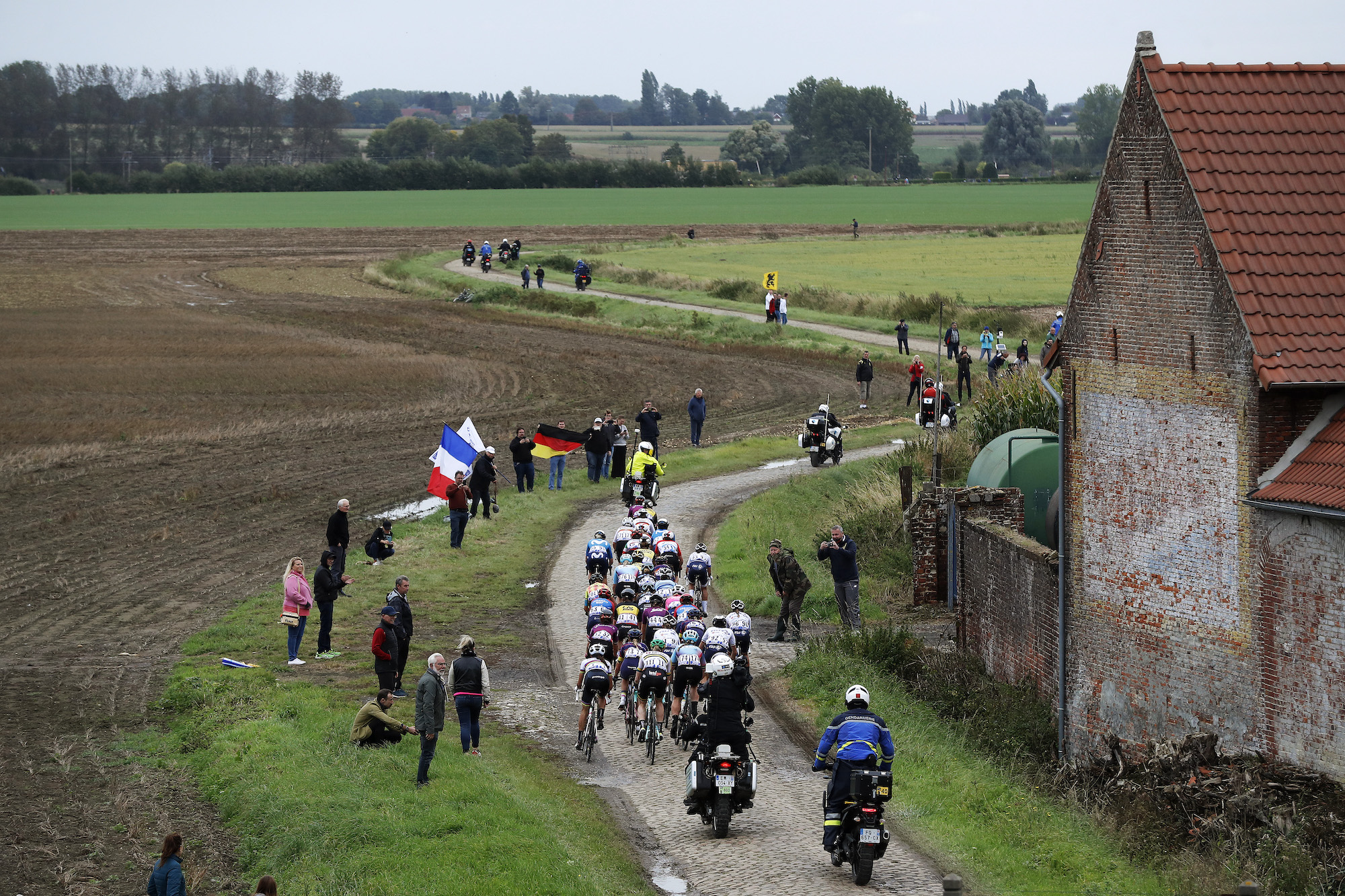 Zwift becomes title sponsor of Paris-Roubaix Femmes
Zwift becomes title sponsor of Paris-Roubaix FemmesOnline fitness platform builds on deal to sponsor inaugural Tour de France Femmes
By Adam Becket Published
-
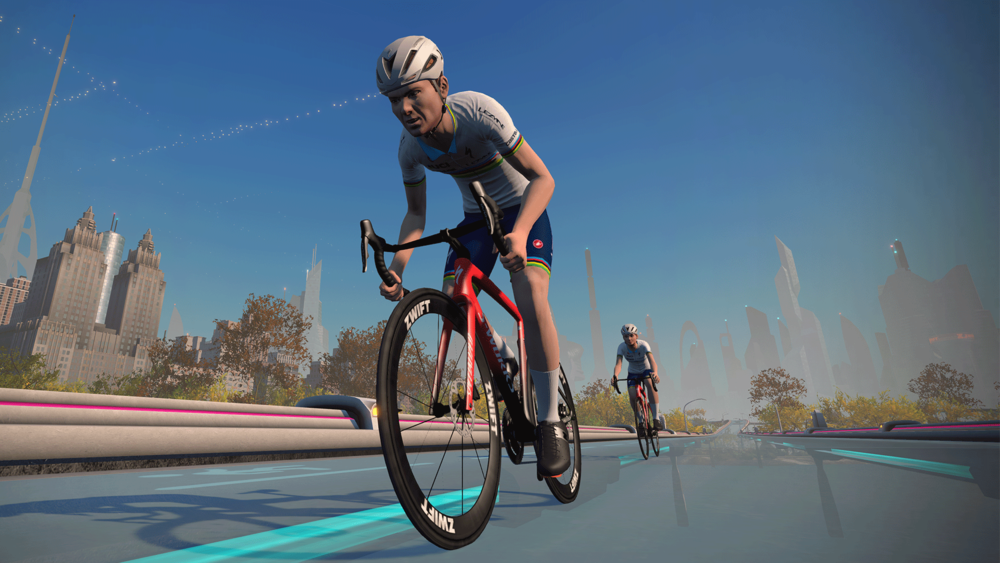 50 riders have been confirmed to be taking part in the UCI E-Sport World Championships 2022
50 riders have been confirmed to be taking part in the UCI E-Sport World Championships 2022The event is set to take place in Zwift's New York after riders have qualified from their continental groups
By Tim Bonville-Ginn Published
-
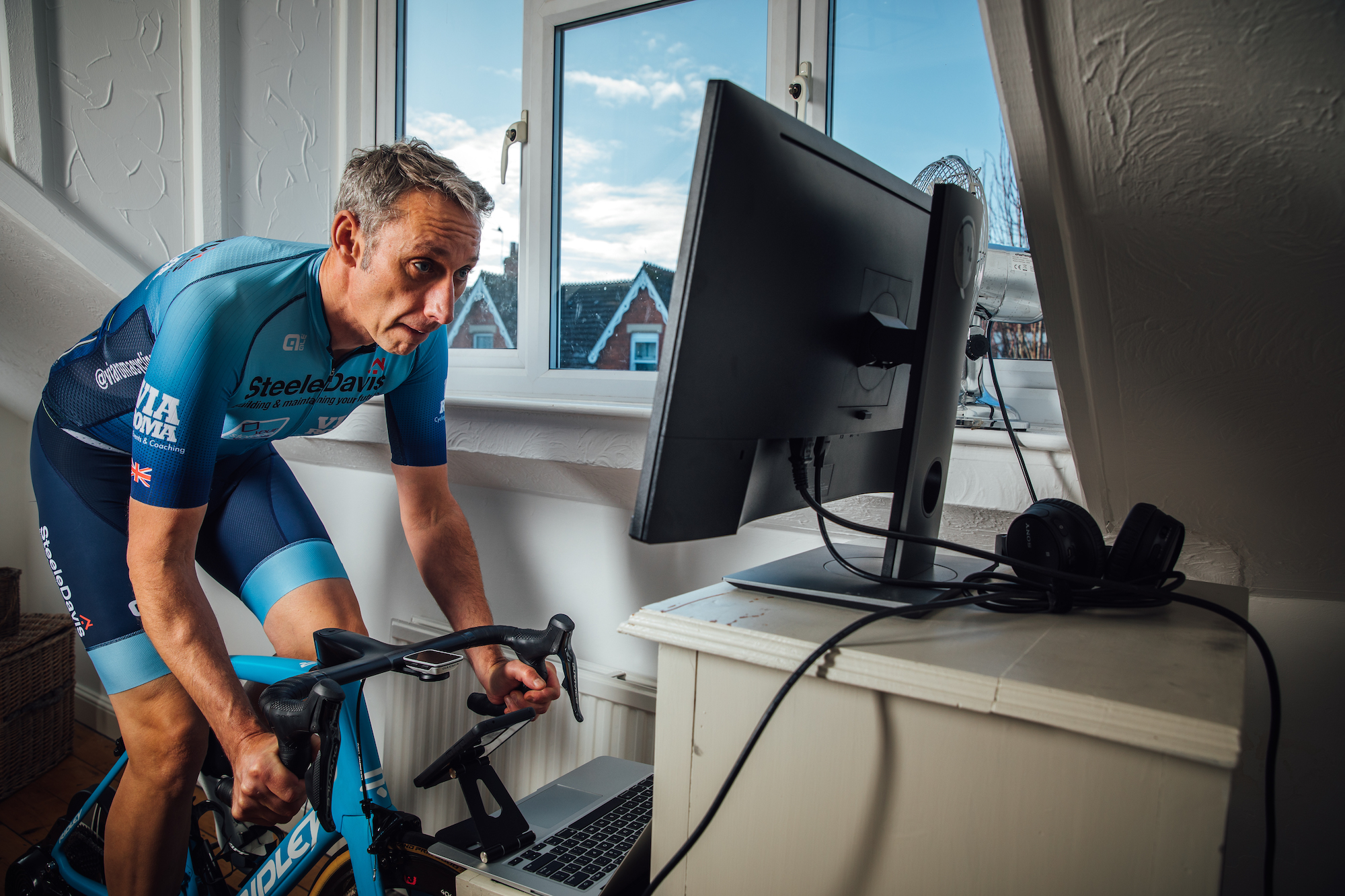 Zwift racing one step closer to becoming Olympic sport with new Olympic Virtual Series
Zwift racing one step closer to becoming Olympic sport with new Olympic Virtual SeriesZwift racing is one step closer to becoming an official Olympic discipline, as it now forms part of a new Olympic Virtual Series competition.
By Alex Ballinger Published
-
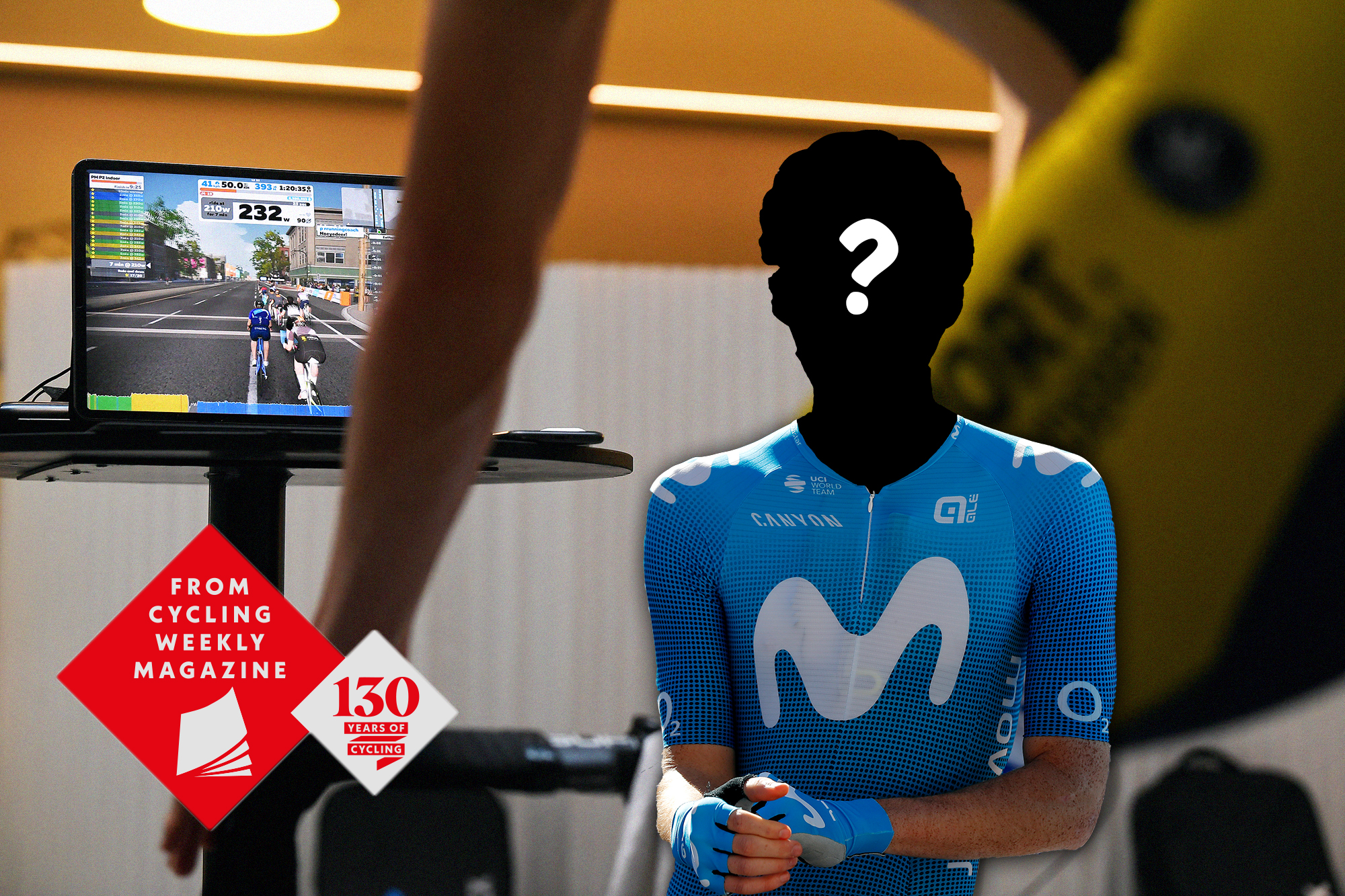 Will e-racing generate a new kind of cycling superstar?
Will e-racing generate a new kind of cycling superstar?Movistar recently held a talent ID programme that consisted of a series of Zwift races designed to recruit 10 riders
By James Shrubsall Published
-
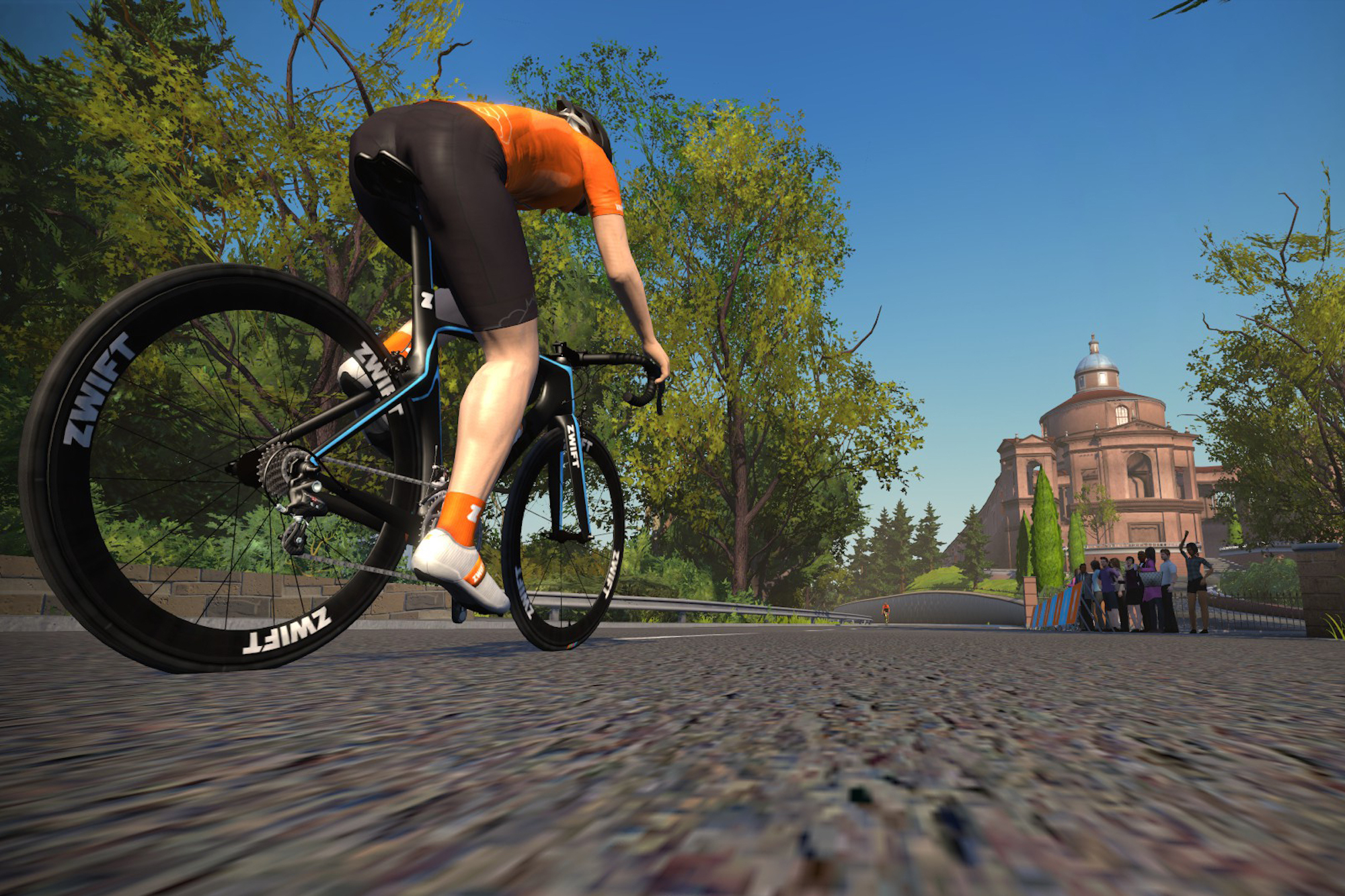 Zwift issues another ban for alleged data manipulation after investigating rider’s past results
Zwift issues another ban for alleged data manipulation after investigating rider’s past resultsZwift has issued another ban to a rider for alleged data manipulation, after investigating previous results following irregularities in his power data.
By Alex Ballinger Published
-
 Remco Evenepoel posts first Zwift rides online as he returns to training
Remco Evenepoel posts first Zwift rides online as he returns to trainingThe 21-year-old Deceuninck - Quick-Step rider was recently given the all clear to return to riding his bike after a short break
By Tim Bonville-Ginn Published